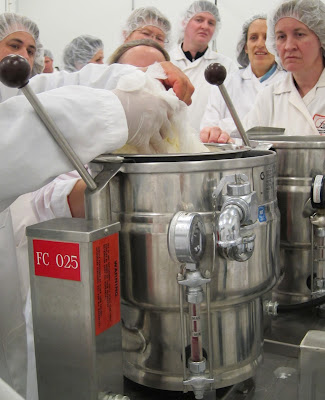Life in the Undergrowth
I have been thoroughly enjoying David Attenborough's 2005 television series about insects. There is so much diversity and complexity on such a small scale. And they have found some ingenious ways to not only survive but to thrive.
There is a blue, European butterfly that lays its eggs on the gentian flower. The eggs hatch and form larvae that smell and sound like ant larvae. So the ants haul the larvae off to their underground nest where they feed them and care for them.
But that isn't the end of the story. There is a wasp that is able to detect which ant nests contain butterfly larvae. They crawl down the tunnel to the nest and release a pheromone that overwhelms the ants so that they start attacking each other. While the ants are preoccupied, the wasp injects the butterfly larvae with its eggs. The wasp leaves, and the ants continue to care for the larvae as they develop into chrysalis.
Eventually the chrysalis splits open. And sometimes it is a butterfly that emerges, crawls above ground, dries out its wings, and begins to fly. But other times it's a wasp.
Nearly the entire life of an insect is dominated by a powerful urge to reproduce. Sometimes their lives are very, very short - as is the case with mayflies who live only a few hours, just long enough hopefully to mate. And, on other occasions, insects like the butterfly and wasp find creative ways to ensure that their eggs will survive.
There is a blue, European butterfly that lays its eggs on the gentian flower. The eggs hatch and form larvae that smell and sound like ant larvae. So the ants haul the larvae off to their underground nest where they feed them and care for them.
But that isn't the end of the story. There is a wasp that is able to detect which ant nests contain butterfly larvae. They crawl down the tunnel to the nest and release a pheromone that overwhelms the ants so that they start attacking each other. While the ants are preoccupied, the wasp injects the butterfly larvae with its eggs. The wasp leaves, and the ants continue to care for the larvae as they develop into chrysalis.
Eventually the chrysalis splits open. And sometimes it is a butterfly that emerges, crawls above ground, dries out its wings, and begins to fly. But other times it's a wasp.
Nearly the entire life of an insect is dominated by a powerful urge to reproduce. Sometimes their lives are very, very short - as is the case with mayflies who live only a few hours, just long enough hopefully to mate. And, on other occasions, insects like the butterfly and wasp find creative ways to ensure that their eggs will survive.




Comments